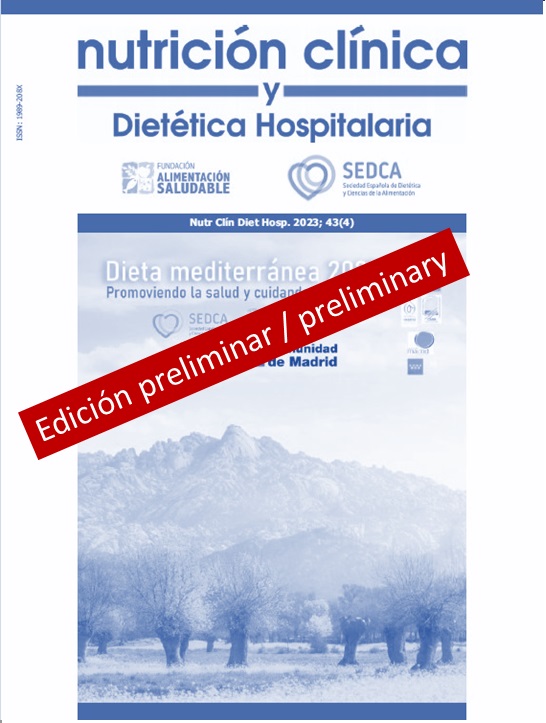Social Media Use and Risk of Eating Disorders in Adolescent Girls from a School in Lima, Peru
DOI:
https://doi.org/10.12873/453narreaKeywords:
Adolescents, Social Media, Eating disordersAbstract
Background: Social media use has significantly transformed adolescents’ lifestyles, raising concerns about its impact on health and eating behaviors due to its potential association with eating disorders.
Objective: To determine the relationship between social media use (SMU) and the risk of eating disorders (ED) in adolescent girls aged 14 to 17 years from a school in Lima, Peru.
Methods: Observational, analytical, cross-sectional study conducted with 269 secondary school students. The Social Media Addiction Questionnaire (ARS) was used for the “Social Media Use” dimension, and the Eating Attitudes Test (EAT-26) was employed to assess the risk of eating disorders (ED). Sociodemographic and anthropometric variables were collected. The analysis included descriptive statistics, Student’s t-test, Pearson’s chi-square, and Poisson regression models with robust variance, adjusted for age and BMI-for-age category.
Results: The mean age was 14.9 ± 0.73 years, and the prevalence of ED risk was 35.7%. Adolescents at risk of ED had significantly higher SMU scores (21.24 ± 6.77) compared to those not at risk (19.36 ± 5.94; p = 0.019). Regression analysis showed that each additional point in SMU was associated with a 3% higher prevalence of ED risk (adjusted PR: 1.03; 95% CI: 1.005–1.054).
Conclusions: Higher social media use was associated with an increased risk of ED in adolescent girls, independent of age and BMI-for-age. These findings underscore the need for educational strategies promoting critical social media consumption and ED prevention among adolescents.
References
1. Aparicio-Martinez P, Perea-Moreno AJ, Martinez-Jimenez MP, Redel-Macias MD, Pagliari C, Vaquero-Abellan M. Social media, thin-ideal, body dissatisfaction and disordered eating attitudes: An exploratory analysis. Int J Environ Res Public Health. 2019;16(21):4177. doi:10.3390/ijerph16214177
2. Praet N, Stevens J, Casteels K, Toelen J. The association of social media use and eating behaviour of Belgian adolescent girls diagnosed with anorexia nervosa: a qualitative approach. Children (Basel). 2024;11(7):822. doi:10.3390/children11070822
3. Lozano-Muñoz N, Borrallo-Riego Á, Guerra-Martín MD. Impact of social network use on anorexia and bulimia in female adolescents: a systematic review. An Sist Sanit Navar. 2022;45(2). doi:10.23938/ASSN.1009
4. Instituto Nacional de Estadística e Informática (INEI). El 48% de la población adolescente de 12 a 17 años usuaria de internet son mujeres [Internet]. Gob.pe. [citado 10 jun 2023]. Disponible en: https://m.inei.gob.pe/prensa/noticias/el-48-de-la-poblacion-adolescente-de-12-a-17-anos-usuaria-de-internet-son-mujeres-7527/
5. Holland G, Tiggemann M. A systematic review of the impact of the use of social networking sites on body image and disordered eating outcomes. Body Image. 2016;17:100–10. doi:10.1016/j.bodyim.2016.02.008
6. Turner PG, Lefevre CE. Instagram use is linked to increased symptoms of orthorexia nervosa. Eat Weight Disord. 2017;22(2):277–84. doi:10.1007/s40519-017-0364-2
7. García B. Trastornos de la conducta alimentaria y redes sociales: una perspectiva desde la adolescencia. Rev Esp Salud Pública. 2023;97:e202309123. doi:10.23938/ASSN.1075
8. Bajaña Marín S, García AM. Uso de redes sociales y factores de riesgo para el desarrollo de trastornos relacionados con la alimentación en España: una revisión sistemática. Aten Primaria. 2023;55(3):102141. doi:10.1016/j.aprim.2023.102708
9. Tiggemann M, Hayden S, Brown Z, Veldhuis J. The effect of Instagram “likes” on women’s social comparison and body dissatisfaction. Body Image. 2018;26:90–7. doi:10.1016/j.bodyim.2018.07.002
10. Wilksch SM, O'Shea A, Ho P, Byrne S, Wade TD. La relación entre el uso de las redes sociales y los trastornos alimentarios en jóvenes adolescentes. Int J Eat Disord. 2020;53(1):96–106. doi:10.1002/eat.23198
11. Suhag K, Rauniyar S. Social media effects regarding eating disorders and body image in young adolescents. Cureus. 2024;16(4):e58674. doi:10.7759/cureus.58674
12. Vázquez Arévalo R, Aguilar XL, Ocampo Tellez-Girón MT, Mancilla-Diaz JM. Eating disorders diagnostic: from the DSM-IV to DSM-5. Rev Mex Trastor Aliment. 2015;6(2):108–20. doi:10.1016/j.rmta.2015.10.003
13. Argimón JM, Jiménez J. Métodos de investigación clínica y epidemiológica. 3ª ed. Barcelona: Elsevier; 2013.
14. Escurra Mayaute M, Salas Blas E. Construcción y validación del cuestionario de adicción a redes sociales (ARS). Liberabit. 2014;20(1):73–91.
15. Rivas T, Bersabé R, Jiménez M, Berrocal C. The Eating Attitudes Test (EAT-26): reliability and validity in Spanish female samples. Span J Psychol. 2010;13(2):1044–56. doi:10.1017/s1138741600002687
16. World Health Organization. Growth reference data for 5 to 19 years: BMI-for-age indicators [Internet]. Available from: https://www.who.int/tools/growth-reference-data-for-5to19-years/indicators/bmi-for-age
17. Torres CP, Kenny I, Espinoza T, Salazar Pérez C, Viteri-Condori L, Aguilar JC, Rondan TA. Trastornos de la conducta alimentaria en estudiantes de medicina de una universidad de Perú. Rev Cubana Salud Pública. 2017;43(4):552–63.
18. Ojeda-Martín A, López-Morales MP, Jáuregui-Lobera I, Herrero-Martín G. Uso de redes sociales y riesgo de padecer TCA en jóvenes. JONNPR. 2021;6(10):1289–1307. doi:10.19230/jonnpr.4322
19. Dahlgren CL, Sundgot-Borgen C, Kvalem IL, Wennersberg AL, Wisting L. Further evidence of the association between social media use, eating disorder pathology and appearance ideals and pressure: a cross-sectional study in Norwegian adolescents. J Eat Disord. 2024;12(1):34. doi:10.1186/s40337-024-00992-3
20. Dane A, Bhatia K. The social media diet: a scoping review to investigate the association between social media, body image and eating disorders amongst young people. PLOS Glob Public Health. 2023;3(3):e0001091. doi:10.1371/journal.pgph.0001091
21. Saul JS, Rodgers RF. Adolescent eating disorder risk and the online world. Child Adolesc Psychiatr Clin N Am. 2018;27(2):221–28. doi:10.1016/j.chc.2017.11.011
22. Saunders JF, Eaton AA. Snaps, selfies, and shares: how three popular social media platforms contribute to the sociocultural model of disordered eating among young women. Cyberpsychol Behav Soc Netw. 2018;21(6):343–54. doi:10.1089/cyber.2017.0713
23. Saffran K, Fitzsimmons-Craft EE, Kass AE, Wilfley DE, Taylor CB, Trockel M. Facebook usage among those who have received treatment for an eating disorder in a group setting. Int J Eat Disord. 2016;49(8):764–77. doi:10.1002/eat.22567
24. Logrieco G, Marchili MR, Roversi M, Villani A. The paradox of TikTok anti-pro-anorexia videos: how social media can promote non-suicidal self-injury and anorexia. Int J Environ Res Public Health. 2021;18(3):1041. doi:10.3390/ijerph18031041
25. Yan H, Fitzsimmons-Craft EE, Goodman M, Krauss M, Das S, Cavazos-Rehg P. Automatic detection of eating disorder-related social media posts that could benefit from a mental health intervention. Int J Eat Disord. 2019;52(10):1150–6. doi:10.1002/eat.23148
Downloads
Published
License
Copyright (c) 2025 Nutrición Clínica y Dietética Hospitalaria

This work is licensed under a Creative Commons Attribution-NonCommercial-NoDerivatives 4.0 International License.
Los lectores pueden utilizar los textos publicados de acuerdo con la definición BOAI (Budapest Open Access Initiative)







